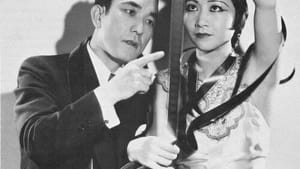Stay in the Loop
BSR publishes on a weekly schedule, with an email newsletter every Wednesday and Thursday morning. There’s no paywall, and subscribing is always free.
Movie magic and history, through an Asian American lens
PAAFF 2020: Panels on Asian American cinema are free to stream

Like many 2020 film festivals, the Philadelphia Asian American Film Festival (PAAFF) went online this year. Along with the usual film screenings, the festival included a number of free discussions, and though PAAFF 2020 ended on November 15, these panels and Q&As are still available to watch on PAAFF’s YouTube page, including Seeing Ourselves in Asian American History Through Film and Media, and The Magic in World Cinema: A Performance and Conversation with Shreeyash Palshikar.
A new timeline
PAAFF’s description of Seeing Ourselves in Asian American History Through Film and Media promised that PAAFF programmers Eric Hung and Irene Chien would “share a timeline of films designed for students, film buffs, lifelong learners, and allies who seek an alternate history of Asian American film and media representation.”
What might not have been clear from that description is that “timeline” wasn’t a general reference to how the panel would be organized. Instead, the panel was an introduction to an actual timeline on the Music of Asian America Research Center’s website. Designed by Hung and Chien, along with a group of volunteers who also appeared on this panel, Asian Americans on Celluloid is still under development, but links to many essays and films are live, ranging from the very beginning of the film industry up through today.
Only two of the films discussed in the panel and featured on the website timeline were released before the 1980s, which might be disappointing to anyone looking for a deeper dive into earlier cinema. But where it doesn’t offer links to specific early films, the website features essays highlighting the different time periods and individuals who deserve more attention. And as Hung pointed out at the PAAFF panel, all of the films on the timeline are accessible online for $5 or less, which could be why there aren’t more early films. There’s no question the site will be an amazing resource—it’s worth noting that at least three of the films feature LGBTQ+ storylines, and that there are a number of documentaries.
Magic in World Cinema
While it’s not necessarily a bad thing to leave the audience wanting more, the November 13 panel titled The Magic in World Cinema: A Performance and Conversation with Shreeyash Palshikar tried to squeeze too much into one hour. It ultimately felt like it was cut short—a shame because it’s clear featured artist Shreeyash Palshikar and actor Dwight Sora had a lot more to say.
Instead of getting an hour to carry out their discussion, as on most of the panels, the first half-hour was devoted to a magic show Palshikar had pre-recorded. As a live element, Palshikar talked over the show, explaining some of the differences between Western magic and traditional Indian street magic. It’s highly informative, but just like it’s usually preferable to watch a movie on its own before turning on the director’s commentary, it would’ve been cool to see the magic show without voiceover.
Palshikar and Sora don’t waste any time and have a great rapport, which makes their discussion even more fascinating. Some of the topics they cover include how Asia has been portrayed in Western media. The viewer might not know, for example, that in French director Georges Méliès’s 1904 short Tchin-Chao, the Chinese Conjurer, the woman in the film is wearing a Japanese-style outfit, not a Chinese one. It’s a worthwhile panel, but an extra half hour for the speakers would have been valuable.
The Magic in World Cinema: A Performance and Conversation with Shreeyash Palshikar is available on YouTube. Seeing Ourselves in Asian American History Through Film and Media is also on the PAAFF YouTube channel.
Image description: A vintage black-and-white photo of Japanese actor Sessue Hayakawa and Chinese American actor Anna May Wong. Hayakawa wears a tuxedo, and Wong wears a light-colored, ruched, sleeveless satin evening dress. They are both holding and looking at a reel of film.
What, When, Where
The Magic in World Cinema: A Performance and Conversation with Shreeyash Palshikar. Featuring Shreeyash Palshikar and Dwight Sora. Streamed on November 13, 2020, as part of the Philadelphia Asian American Film Festival.
Seeing Ourselves in Asian American History Through Film and Media. Featuring Eric Hung and Irene Chien. Streamed on November 14, 2020. as part of the Philadelphia Asian American Film Festival.
Both panels can be streamed for free through PAAFF’s YouTube channel.
Sign up for our newsletter
All of the week's new articles, all in one place. Sign up for the free weekly BSR newsletters, and don't miss a conversation.
 Rachel Bellwoar
Rachel Bellwoar